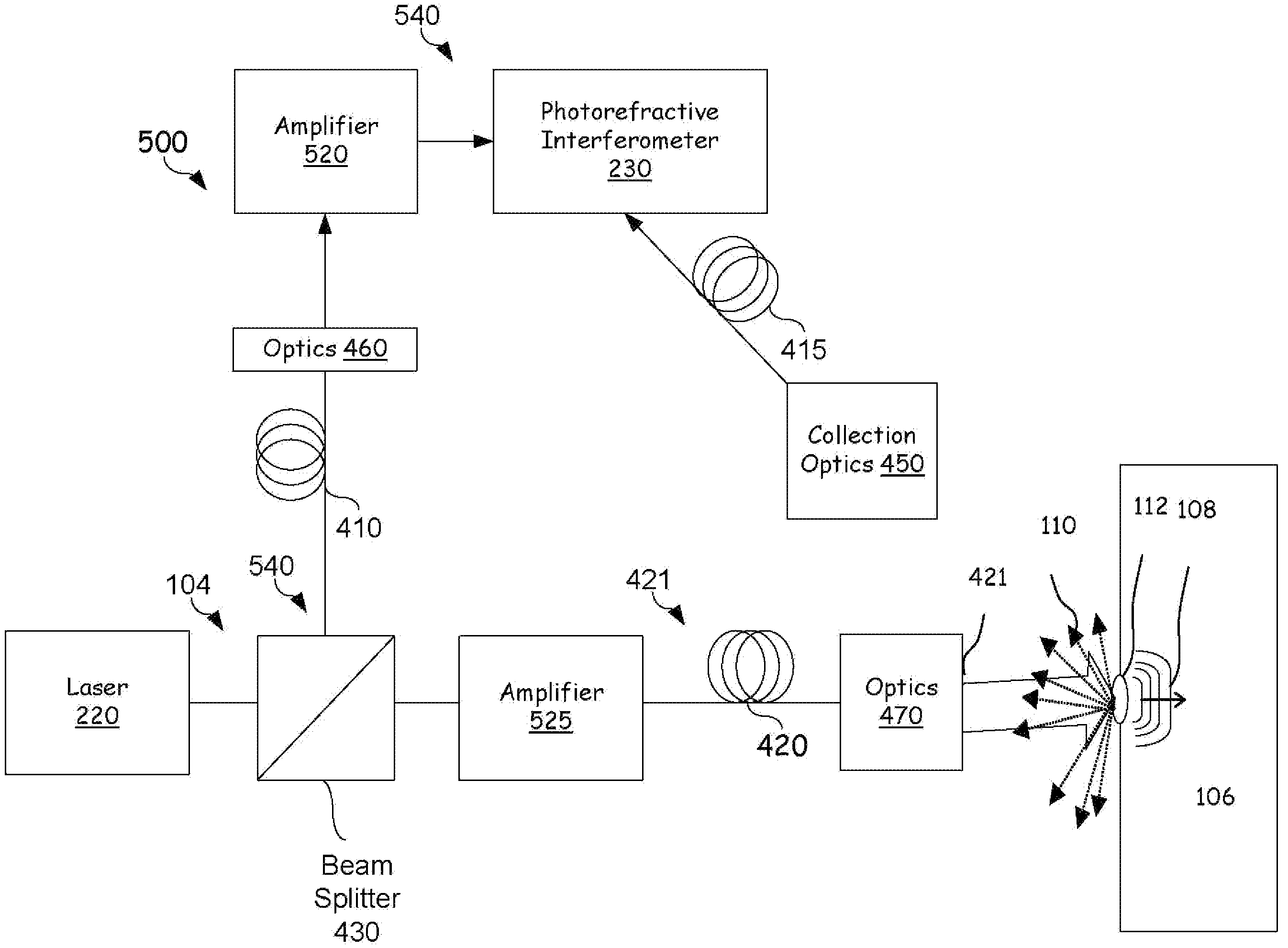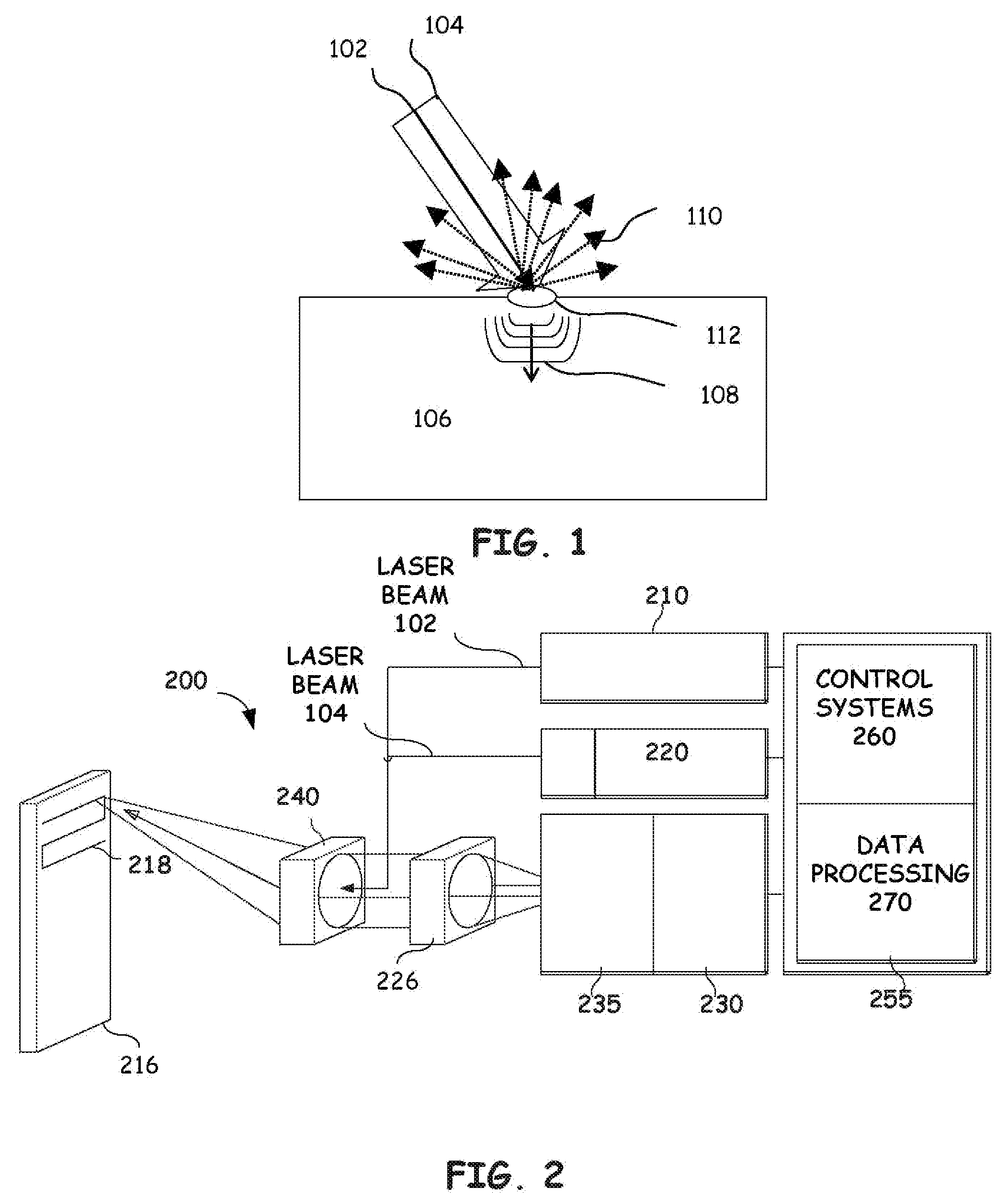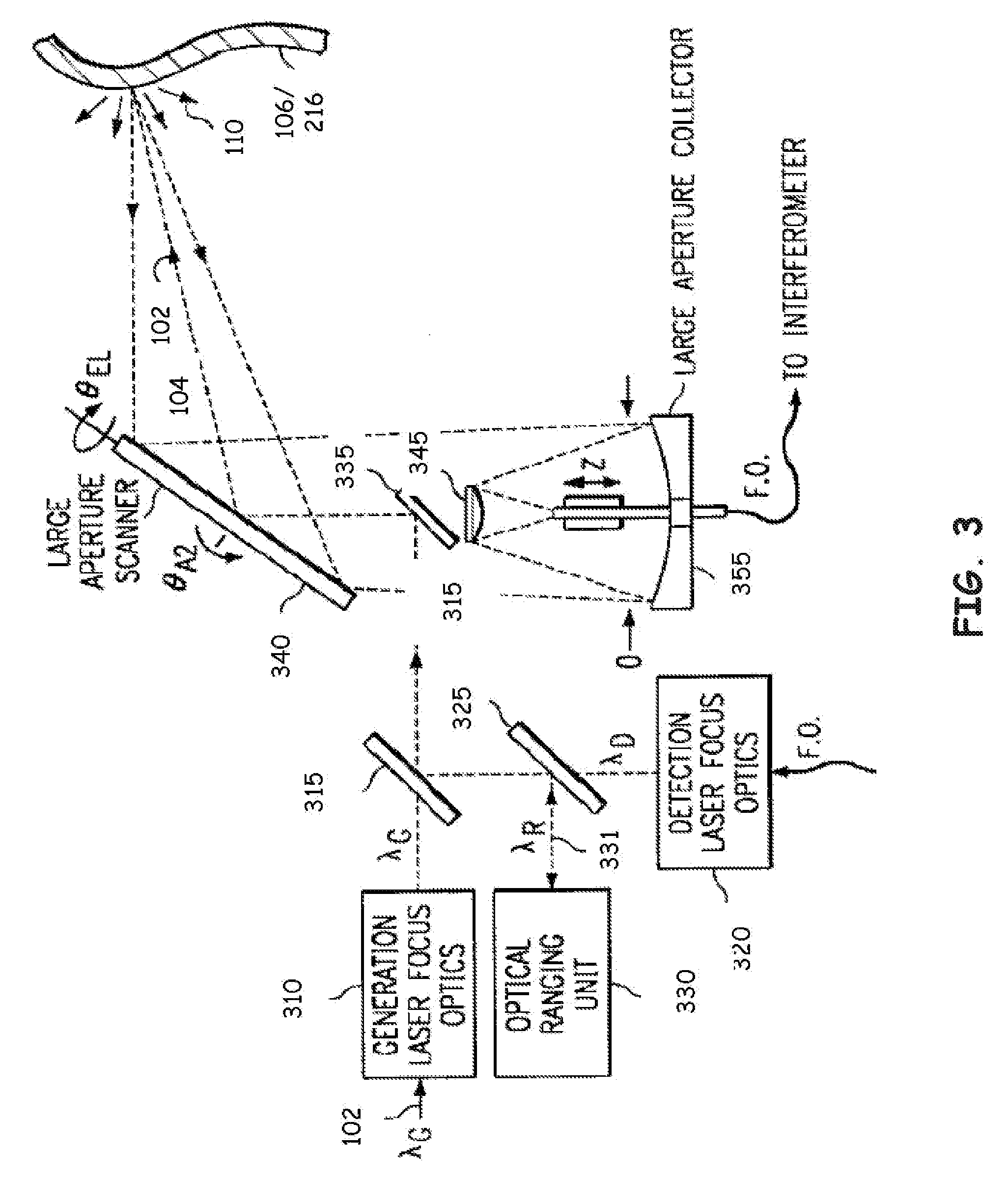Apparatus and method for two wave mixing (TWM) based ultrasonic laser testing
a technology of ultrasonic laser and two wave mixing, applied in the direction of measurement devices, instruments, scientific instruments, etc., can solve the problems of adversely increasing the manufacturing cost associated with composite structures, labor-intensive, expensive, and difficult to achieve the effect of reducing the number of instruments, improving the signal-to-noise ratio, and flexible distribution of the different devices
- Summary
- Abstract
- Description
- Claims
- Application Information
AI Technical Summary
Benefits of technology
Problems solved by technology
Method used
Image
Examples
Embodiment Construction
[0024]Preferred embodiments of the present invention are illustrated in the FIGs., like numerals being used to refer to like and corresponding parts of the various drawings.
[0025]Embodiments of the present invention provide an improved system, apparatus and method for ultrasonic laser testing using an independently-amplified two wave mixing (TWM) interferometer reference (pump) beam. Unlike prior art ultrasonic laser testing systems using a TWM interferometer, the embodiments of the present invention can thus provide an independent way to control the power of the pump beam to obtain desired photorefractive crystal speeds and background noise levels. The embodiments of the present invention can significantly reduce the amount of power diverted from the detection laser beam to improve the signal-to-noise ratio of the detected ultrasonic signals. Further, embodiments of the present invention provide for a more reliable coupling of the pump beam into an optical fiber and provide for mor...
PUM
 Login to View More
Login to View More Abstract
Description
Claims
Application Information
 Login to View More
Login to View More - R&D
- Intellectual Property
- Life Sciences
- Materials
- Tech Scout
- Unparalleled Data Quality
- Higher Quality Content
- 60% Fewer Hallucinations
Browse by: Latest US Patents, China's latest patents, Technical Efficacy Thesaurus, Application Domain, Technology Topic, Popular Technical Reports.
© 2025 PatSnap. All rights reserved.Legal|Privacy policy|Modern Slavery Act Transparency Statement|Sitemap|About US| Contact US: help@patsnap.com



